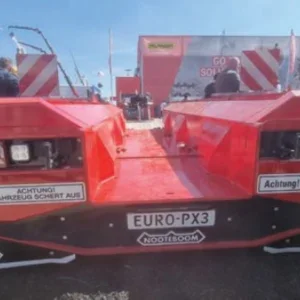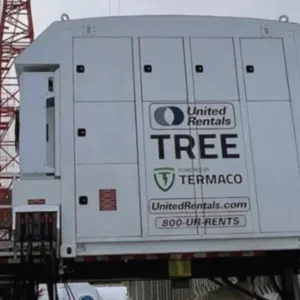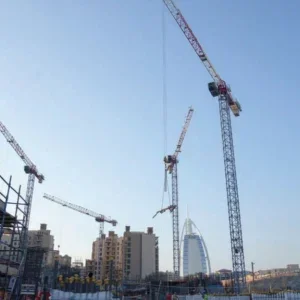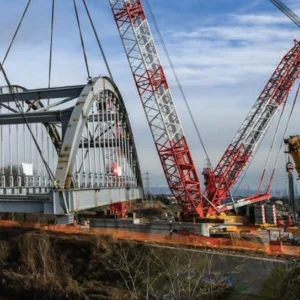The challenge facing big tower crane rental houses is clear, says HTC general manager Duncan Salt: "We supply cranes with an operator and see great benefit in doing that. But with the larger cranes there’s more in hire rate; at the smaller end, the bulk of the hire rate goes on the operator."
HTC, like many other tower crane businesses in developed markets, finds the profitability of much of its fleet squeezed between diminished rental rates for smaller tower cranes, and steady wages for operators.
On the larger capacity end, business is more resilient, Salt says. "We’re doing a fair bit of work on Crossrail [the new train line running from Heathrow west of London out to the east]. We’re working on big commercial projects: we’ve got one at London Bridge station and we’re due to do a big job at Moorgate. We’re working at Tottenham Court Road on the Crossrail tunnel."
The question for the business then wasn’t just how to get more of these big jobs, but how to make smaller jobs pay. An opportunity to do this came when Xena, the manufacturer of LoadSwift material handling cranes, came up for sale.
The LoadSwift is a simple and specialised concept. Designed to bring smaller loads up to working levels on skyscrapers, it braces in position between floor and ceiling. A telescopic boom extended in and out. With just this one movement, it can hoist loads from the ground to decks on other floors. Hoisting and boom extension can be operated using a simple remote. As such, it can offer some of the most useful capabilities of both material hoists and tower cranes, without the need for a highly trained crane operator.
Salt says, "The LoadSwift boom crane is a better delivery solution than materials hoists. It supplements our hoisting business as much as our crane business. It’s got a 5t payload, compared to just 2.5t on a materials hoist. With LoadSwift, you can lift 3t at 6m, and the decks themselves will take 5t.
"Customers can get in much larger modules. Residential and hotel fit out contractors are doing much more using pods for bathrooms and kitchens. The other work we get is on façades, where cladding panels too big to go in a hoist.
"It’s quick, and it’s very easy to set up. We’ve got the guys available and the transport in place, so it’s no strain on the business to get some benefit. The LoadSwift is self-sufficient of tower cranes, so you don’t need to wait for your two lifts an hour. While the crane does the steel, they can bring in maximum size panels that are far bigger than hoist car.
"We lift in a deck first. Then we lift the LoadSwift onto the deck, wheel it into building, take the deck away, and lift it into position. With four crane lifts, you’re ready to go. It’s got 120m of rope, so you can put it as high as you want. You can put in as many decks as you’ve got floors below, and roll them in and out as needed. We’re developing it now so you can lift the decks with LoadSwift rather than the tower crane. We’ve got a steel skeletal frame for the deck, and will use more plastics for the rest of the deck, so it is very rigid and light.
"After the first four lifts, we won’t need the tower crane until we strip out. We’re also working on developing load swift so it will fit into a conventional hoist, so it will be fully self sufficient of the crane. We also put it in with a mobile, putting the first deck in, positioning the LoadSwift, then moving decks where we want them to be."
With a plan to make the system more self sufficient, HTC is looking to develop the business around the world. Salt says, "We’ve got the patent for the system. We’re going to set up a series of agencies around the world. There’s interest from Brazil, Canada, Middle East, Australia. We’ve got registered patents in all of those countries, and parts of America."






